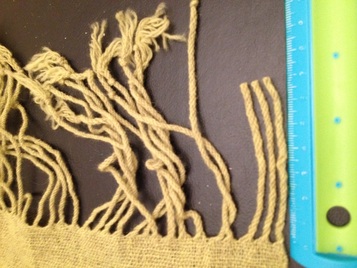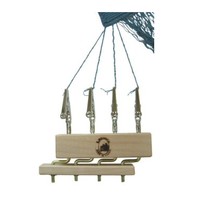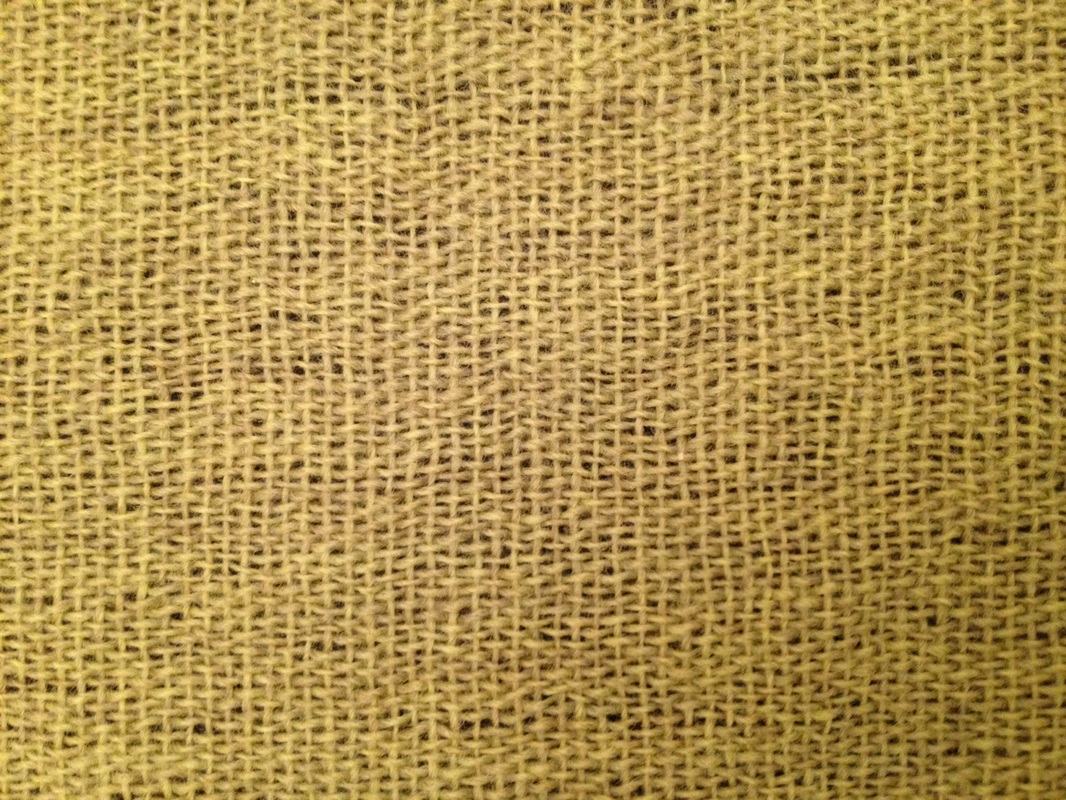http://aethelmearcgazette.com/2015/03/31/new-aethelmearc-arts-sciences-website-debuts/
|
Looks like this will become a great centralized resource for Kingdom artisans!
http://aethelmearcgazette.com/2015/03/31/new-aethelmearc-arts-sciences-website-debuts/
0 Comments
I have longed for some time to compile a swatch book of plausible Viking textiles. It will include samples of some purchased items (which will include information such as what I think is good and bad about each), but also a large number of weaving samples that I create myself. I have seen several people put together very nice collections of handwoven swatches that display period appropriate weave structures, but the yarns used are often heavy and the warp and weft highly contrast each other to better display the weave. I want to take that concept one step further and show those structures in textiles that are of an appropriate weight of yarn as well as fiber type. Eventually I would also add in samples of very cloth types (such as Veka cloth) or perhaps event eventually recreate some extant textiles.
The thing that has held me back is that my floor loom is often tied up with larger projects, and further, I only have access to it at certain times of the week (my time is split between two houses in two different states/Kingdoms). That means large projects such as rugs or tunics take four times as long as they should. I finally have have a solution for this - a table loom. I recently purchased and 8 shaft Ashford table loom from a friend. There was a huge mess with the shipping, given that UPS pretty much destroyed the loom in transit (still fighting with them over that... ugh). BUT I have received replacement parts from the US distributor (who, by the way, is FANTASTIC to work with), and this weekend I assembled her and did a test weave. She works and the warp is measured to start my first set of cloth samples and I am more than excited about this. It is my goal to have the first batch ready to display at Pennsic. Realistically, there is no "end" to this project, it could take years and the things I could do with it are pretty much endless. I love the idea though, and if all goes well, I hope to be able to share it with others at events. I have been working on Viking garb and arts for quite some time at this point, and given that I am heavily involved now in the fine details of textile creation, I am starting to take a closer look at the things I "learned" when I first started this journey. Some of them I have mentioned before, and some just smacked me in the face recently. Somethings are misrepresented by reenactors, and some, quite honestly, I just did not gaze at closely enough when I first started (and this, really, is not surprising given the volume of information that is presented to a newcomer to this field of study). So what have I learned recently?
2. I learned quickly enough that there is no evidence for large scale appliques or embroidery on Viking costume. I've gone further to learn how few embroideries we have at all compared to the volume of total textiles recovered. This tells me that the few items we do have were quite rare and given the context from other items in the graves, they were reserved for the very wealthy. (I have written further about this here http://awanderingelf.weebly.com/blog-my-journey/viking-embellishment-and-embroidery-part-3 ) But what I more recently accepted is that the practices of seam embellishment (decorating an existing seam), is probably not as common as reenactors (myself included) would like. See those two Dublin caps above? I do not actually consider those seams embellished. All rows of stitching are necessary and functional. Even if I used a brilliantly colored contrasting thread, those seams still serve a purpose. (Of course, use of colored thread on seams was also a rarity, but that is a topic for another time.) Examples of true seam embellishment would be laying cord over the seam and stitching it down or doing a decorative row of stitching by using something like osenstitch to cover the seam joining. I personally love this type of decoration, but plan to use it a bit more judiciously in the future. What brought me to this conclusion? Well, as mentioned earlier, I have been in the process of reevaluating things I learned early on in my journey. One of those things was that herringbone stitch is period for Vikings. At the time (when making my first dress) that was good enough for me! Looking deeper, I have discovered that the stitch so favored by reenactors was never found used as an embellishment on a garment (at least not that I can find). What examples do we have of this stitch specifically from Viking era and place?
Four samples only (out of hundreds of textiles), and none of them has the stitch displayed in the manner we commonly see it at events (and two of the four are different than a normal herringbone, two are inside the item, and one might not be Viking...). This does not make a terribly good case in my eyes for extensive use of this decoration. Now, will I remove all of my hard work from garments I have already made? I cannot say that is the case. I will, however, be more judicious in use of the stitch in future projects as I attempt to better recreate clothing of the past. Over all, I think the key is, for anyone with an interest in recreation to not get so comfortable in what they "know" that they never take time to look back and reevaluate things (or accept new evidence as they find it). It can be a little frustrating, of course, especially when one has painstakingly applied a mile of herringbone stitching to a garment. But in reality, I find these discoveries exciting in a way. I lets me see how far I have come, and gives me a more clear path in my journey of recreating historic arts! I will be teaching my Viking wool class at AEthelmearc War Practice and twice as Pennsic University. The Pennsic classes will run 3 hours with the first two hours being discussion and demo, and the last hour will allow time for people to experiment with the tools if they would like to try things out. More information on this class can be found under the CLASSES button at the top of this page. Additionally, I am hoping to set up a gathering for the members of the Viking Era Textiles & Fiber Arts group from Facebook (https://www.facebook.com/groups/360623034123093/). If that ends up being scheduled, I will be posting information both on the group and here.
5/16/2015 AEthelmearc War Practice 10am-12pm, A&S Tent #1 Viking Era Wool: Its Production and Use 7/30/2015 Pennsic University 9am-12pm, A&S4 Viking Era Wool: Its Production and Use 8/4/2015 Pennsic University 9am-12pm, A&S4 Viking Era Wool: Its Production and Use Registration is open! The Display will be Sunday, August 1, from 1-6PM in the Great Hall. This is a really wonderful time to see inspiring works by artisans from around the known world. More information and a link to sign up for the display can be found here:
http://www.pennsicwar.org/penn44/DEPTS/DISPLAY/ Unfortunately, I have been confined to Maryland too many weekends tending to my sick kitty. This has somewhat halted the majority of my weaving projects because my looms are in WV. Hoping to do some weaving on my rugs when I get there as I want to weave some wicklebander (leg wraps) for my BF before war and to do that the rugs need to get off of the loom!
In the meantime I have have been doing something very rare for me, and that is working on costumes that are not SCA related. Hopefully I will wrap those up in the next two weeks and be able to revamp my Viking underdress pattern after that (I want to go with an even more fitted version of the Hedeby tunics I have already explored). I am also thrilled that I should be going to War Practice this year! I have already submitted my class information and should be teaching Saturday morning. I will post final information on time and location as soon as I have it. I have not been to this event in 15 years, so am eager to go back! And because I love to add photos to posts, here is one of my kitty sleeping off his sinus infection and one of some of my very first feast gear from way back in the day (1992 or something, lol). I was cleaning out some things last weekend and came across a box of junk and found them inside. I mentioned recently that I was working on a wool gauze fabric for a Dublin style scarf. I finished the weaving last week and finally finished twisting the fringe today. At last the project has been wet-finished and trimmed and while I have a few errors, I am really rather pleased with the outcome. The original post that shows how I warped this with two heddles on a small rigid heddle loom can be found here: http://awanderingelf.weebly.com/a-wandering-elfs-journey/more-sampling-stuff I used a very, very fine wool single that was a mill-end. Unfortunately, it was not as fine as the yarn typically used in period as mine measures approximately .33mm while most of the extant wool scarves were under .20mm. There was one item that ranged up to .29 so using what I had was not unreasonable. While weaving the sett (ends per inch) was 24, after wet-finishing compressed to 28 (with the weft packed in less densely). The weave is tabby, as that is the weave from all of the original items (and it is the most ideal weave to use on a rigid heddle loom). The majority of the extant pieces had a much higher thread count than I manged with my loom (which has a fixed sett), but one was as low as 29-33 threads per inch, which is not terribly off my 28 that I managed in the warp. My weft is much less dense at 16-18 per inch despite my beating hard. I believe that this too was a limitation of the loom. It seems that I can get a tighter beat if I am using a loom with more distance between my shed and the weaving. (Note also that I was not using the rigid heddle as a beater. Instead I used a weaving sword to pack the weft as would have been done on any loom in period.) Despite the differences, I think this item still has the proper feel as a gauzy wool and I am happy with the results. One place where I much need improvement on small projects like this is my draw-in. The weaving started at 9.125 inches wide and by the end it was 8.5 inches (after wet finishing it is 8.5 on one side and 8 on the other). The length went from 20inches to 18 which was a bit more shrink than I anticipated. Both the length and the width, however, are within range of the period examples. I plan to warp another of these soon, so I will wear this one and use the other (hopefully better) one for display purposes. I used a double selvedge as was seen in one of the extant pieces. In that example, two strands of two plied yarn was used, so I plied the same singles I used for weaving to use for that purpose. The fringes in the extant scarves range from 20mm to 100mm. I opted to cut mine at 70mm initially assuming that I can cut them down later if I so choose. It is interesting to note that the extant items often have fringed ends that end in loops, presumably because they were woven on a small two beam vertical loom like that found at Oseberg. When the weaving was complete, the piece could be slipped off of the beam leaving the warp ends as intact loops. My chosen method of weaving did not allow for this so I opted to twist my cut fringe, then wet-finish and cut to desired length. I choose to separate out 8 warp threads for each fringe. I Z twisted those in groups of two and then two the resulting 4 strands and S cabled them. I did tie a knot in the bottom of each until the piece was properly wet-finished just to hold the twist as I set it. This method plying small groups and then cabling them was evident in the extant pieces. The first quarter of the fringes I did entirely with my fingers, but it was hard on my wrist so I switched to a LeClerc fringe twister to finish them. There is no difference at all in the fringes I twisted in my fingers and those for which I used the contraption. If you want to learn more about the headcoverings I highly recommend the book Viking Age Headcoverings from Dublin by Elizabeth Wincott Heckett. It is a fantastic work that gives intricate detail on the history of the textiles and how they were constructed.  Viking Worlds: Things, Spaces and Movement: There are a couple of articles in this one that make me think I will have to track it down. It was published just this past December and though I do not yet see it on Amazon, it is available from the publisher's site: http://www.oxbowbooks.com/oxbow/viking-worlds.html Table of Contents 1. Marianne Hem Eriksen, Unn Pedersen, Bernt Rundberget, Irmelin Axelsen and Heidi Lund Berg: Viking Worlds. Things, Spaces and Movement 2. Neil S. Price: From Ginnungagap to the Ragnarök. Archaeologies of the Viking Worlds PART I. Real and ideal spaces 3. Lydia Carstens: Powerful Space. The Iron Age Hall and its Development During the Viking Age 4. Joanne Shortt Butler: Húsdrápa. A Skaldic Poem in Context 5. Asle Bruen Olsen: Courtyard Sites in Western Norway. Central Assembly Places and Judicial Institutions in the Late Iron Age 6. Sofie Laurine Albris: Place Names and Settlement Development around an Aristocratic Residence. Thoughts from an On-Going Study of the Hinterland of Tissø 7. Marianne Hem Eriksen: The Powerful Ring. Door Rings, Oath Rings, and the Sacral Place PART II. Gendered things, gendered spaces? 8. Charlotte Hedenstierna-Jonsson: She Came from Another Place. On the Burial of a Young Girl in Birka 9. Patrycja Kupiec and Karen Milek: Roles and Perceptions of Shielings and the Mediation of Gender Identities in Viking and Medieval Iceland 10. Heidi Lund Berg: ‘Truth’ and Reproduction of Knowledge. Critical Thoughts on the Interpretation and Understanding of Iron-age Keys PART III. Production, exchange and movement 11. Bjarne Gaut: Manors and Markets. Continental Perspectives on Viking Age Trade and Exchange 12. Ben Cartwright: Making the Cloth that Binds Us. The Role of Textile Production in Producing Viking Age Identities 13. Unn Pedersen: Leadworking in Viking-age Norway 14. Stephen Merkel and Andreas Hauptmann, Volker Hilberg, Robert Lehmann: Isotopic Analysis of Silver from Hedeby and some nearby Hoards. Preliminary Results 15. Leszek Gardela: Vikings in Poland. A Critical Overview |
About Me
I am mother to a billion cats and am on journey to recreate the past via costume, textiles, culture and food. A Wandering Elf participates in the Amazon Associates program and a small commission is earned on qualifying purchases.
Archives
July 2024
Categories
All
Blogroll of SCA & Costume Bloggers
Below is a collection of some of my favorite places online to look for SCA and historic costuming information.
More Amie Sparrow - 16th Century German Costuming Gianetta Veronese - SCA and Costuming Blog Grazia Morgano - 16th Century A&S Mistress Sahra -Dress From Medieval Turku Hibernaatiopesäke Loose Threads: Cathy's Costume Blog Mistress Mathilde Bourrette - By My Measure: 14th and 15th Century Costuming More than Cod: Exploring Medieval Norway |












 RSS Feed
RSS Feed